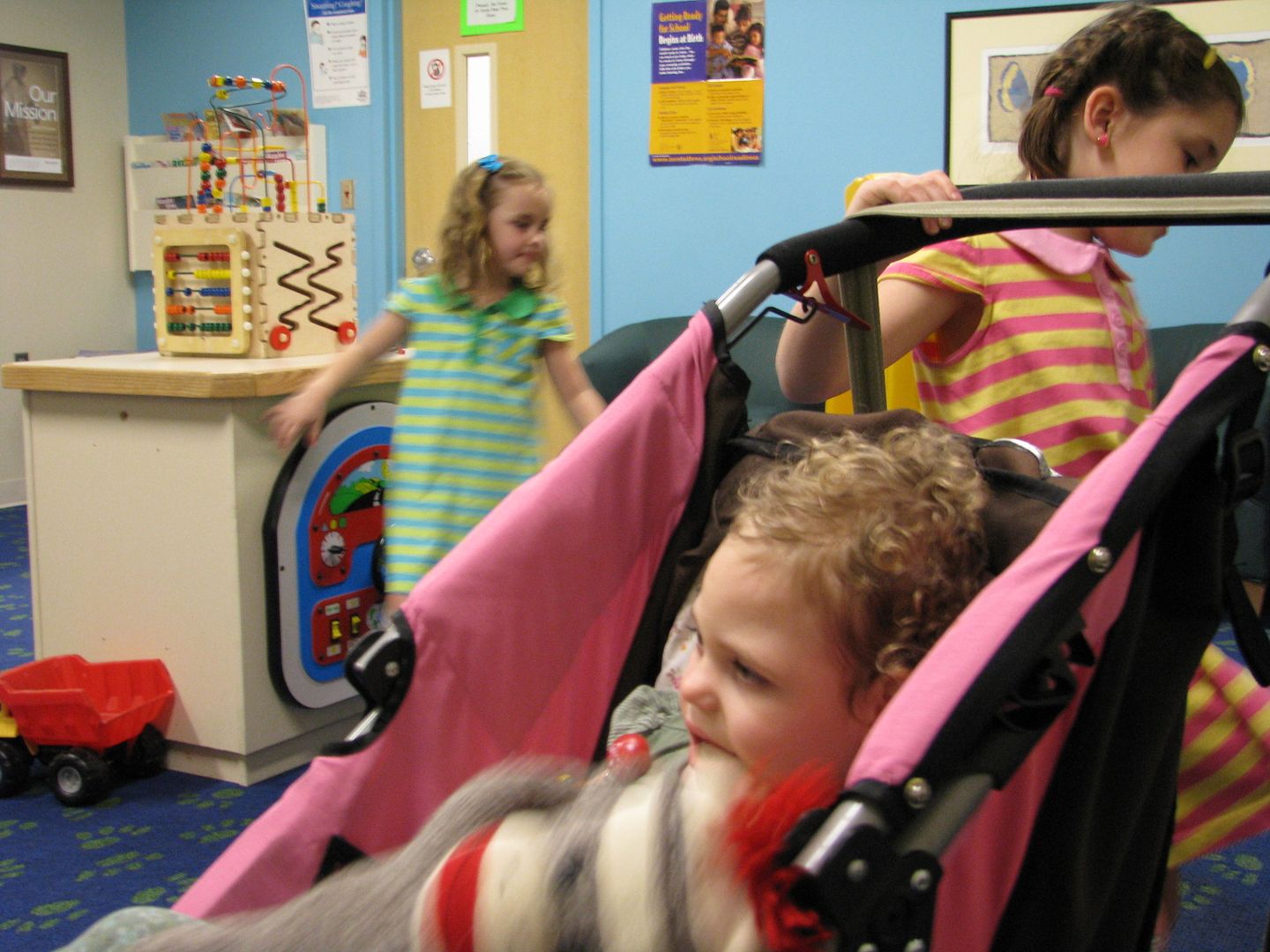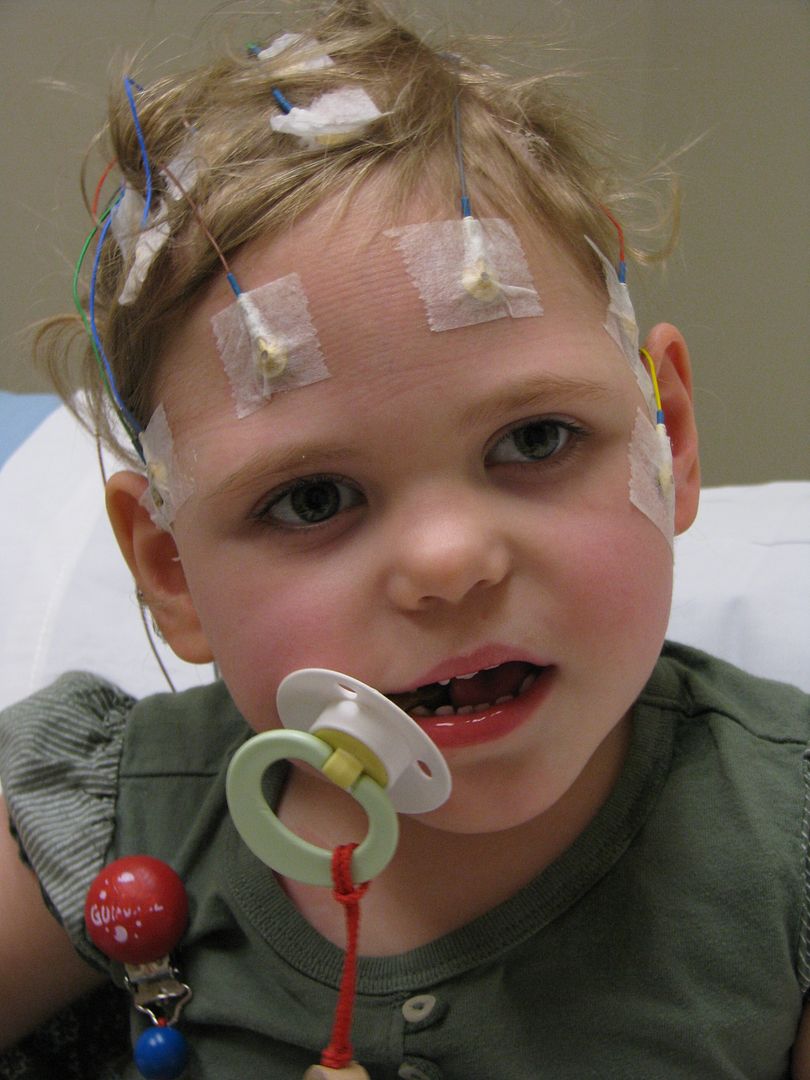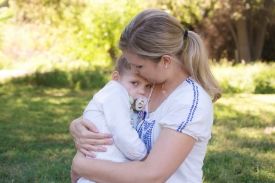
[In the waiting room at the hospital.]
Last Thursday I took Elisabeth to Spokane for an EEG. After it was done we went straight over to her neurologists office to find out results. He mentioned that her brain was full of seizure activity (no surprise there), especially on the right side, but (here comes the BIG news) she was no longer having infantile spasms.
?
??
???
What??
I seriously did a double take and said,
"Did you just say that the EEG showed no infantile spasms???"
"Yes," he replied.
?
??
???
This was the news that I had been waiting almost 2 years for; this was cause for a celebration, heck...this was news worthy of a ticker-tape parade! But instead, I was just confused.
1st of all, if she is not having spasms, what am I seeing all day long that looks exactly like spasms?
2nd of all, if she is not having spasms, what do I blame for her developmental regression? ( I want something to blame, by george!)
As I started in with all my questions Elisabeth had a 'spasm'.
"See...there's one right there," I said.
"No, those are just myoclonic seizures, but they do look the same," he explained.
So....
We talked. And we discussed Elisabeth's behaviors as of late; the head banging, the struggle with feedings, the developmental backtracking.
And then he had an idea.
It's possible that Elisabeth has a Chiari Malformation.
Now, I won't go into great detail about Chiari Malformations right now, at least not until she is actually diagnosed with it. But basically it has to do with compression of the brain stem or spinal cord at the base of the skull.
I have spent some time this weekend researching Chiari Malformations, and let me tell you, it makes sense that this might be what Elisabeth is dealing with. Here's a little bit of what I read:
A Chiari Malformation may cause a variety of symptoms. In infants and young children, difficulty with feeding and swallowing are more common and may result in gagging, drooling and vomiting. Abnormal breathing may occur resulting in the child having slow or noisy breathing similar to snoring in adults. Irritability, head banging and nighttime awakening may all be signs of headache in young infants. Symptoms in older children commonly include headache, spinal curvature, clumsiness and in rare cases difficulty controlling bladder function.
So maybe, maybe that's what it is going on. And if so she will have surgery to create more room for the brain and spinal cord.
So maybe, maybe that's what it is going on. And if so she will have surgery to create more room for the brain and spinal cord.
Coming up in the next few weeks:
- MRI
- Visit to the feeding clinic at Sacred Heart Medical Center
- Swallow study
- Consultation with pediatric surgeon about getting a g-tube
It's a lot to think about, but I am thrilled that there might be an answer. I want an answer...a solution...so bad. I want Elisabeth to be calm, to be comfortable; I want her to progress and learn and grow. And I know we'll get there, we just can't give up.
As I was sitting and waiting for the neurologist to come into the office I took note of an inspirational poster hanging on the wall. It read,
"We either make ourselves miserable, or we make ourselves strong. The amount of work is the same."
-Carlos Castaneda
That might just be my new favorite quote.



